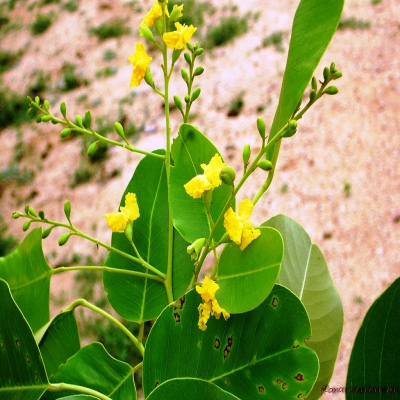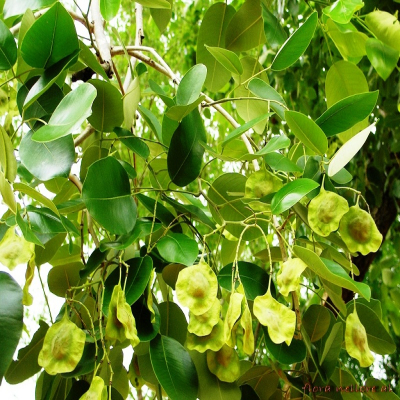Distribution & habitat: Seen in Southern India in the Deccan, in the hills of Cuddapah; South Kurnool and North Arcot of Andra Pradesh and Tamil Nadu upto 1,500 ft. Naturally it occupies the dry deciduous forest type “The Red sanders forests”
Botany: A moderate-sized deciduous tree upto 11m in height with blackish brown bark, deeply cleft in to rectangular plates and dark purple heartwood.
- Leaves: Compound, leaflets 3-5, broad elliptic, obtuse, under surface pale, clothed with fine hairs.
- Flowers: Yellow, in short simple or sparingly branched axillary or terminal racemes.
- Fruits: Oblique pods, gradually narrowed into a short stalk, winged the central hard portion containing the seeds,
- Seeds: Reddish brown and smooth.
Properties: Antibilious, cooling, anthelmintic, antidermatic, antiinflammatory, antirheumatic, aphrodisiac, natural dye, ophthalmic, antipyretic, astringent, bitter, diaphoretic and febrifuge
Chemical constituent:
- Fresh shoots yield glucosides and colouring matter.
- Heart wood contains pterocarpol , Pterocarpitrol, isopterocarpolone and pterocarpodiolone together with β-eudesmol etc
Uses: Eye troubles, headache, haemophilic problems, inflammation, thirst, vomiting and skin diseases.
Propagation: By seeds.



